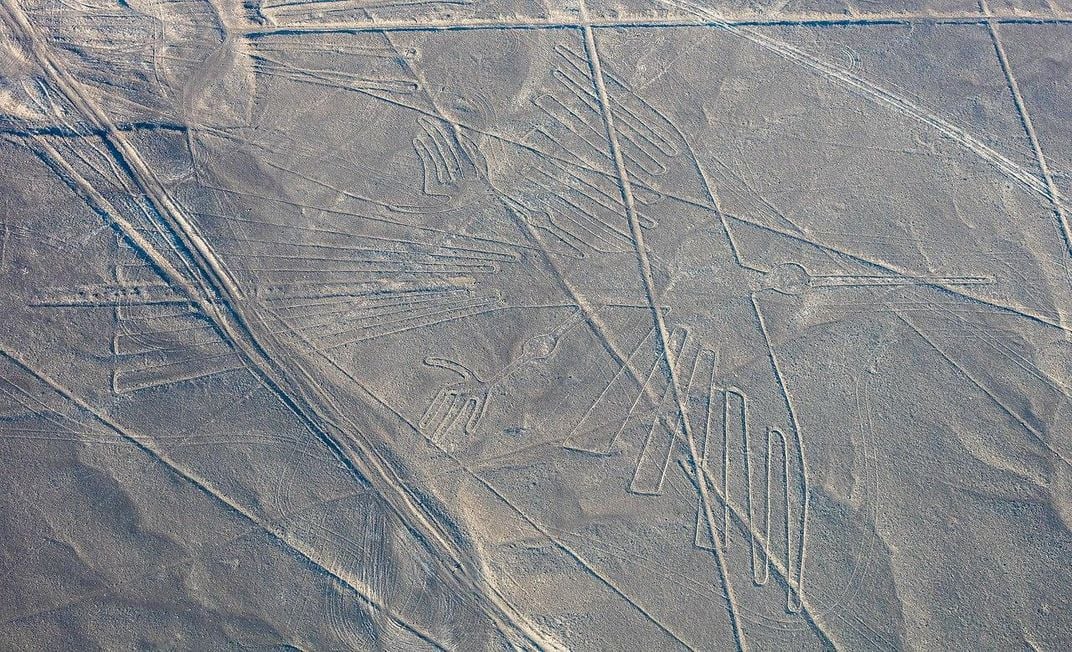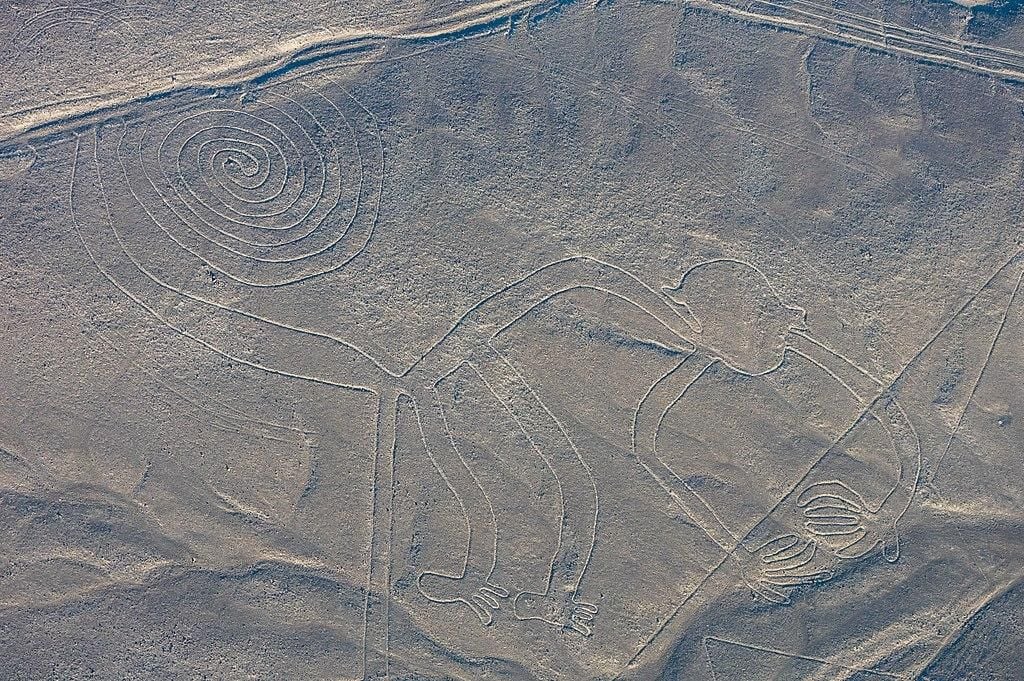Scientists Identify Exotic Birds Depicted in Peru’s Mysterious Nazca Lines
The researchers argue that the non-native birds’ presence must be closely related to the etchings’ overall purpose
/https://tf-cmsv2-smithsonianmag-media.s3.amazonaws.com/filer/20/a2/20a247ff-ce39-4b54-ab1c-1144feeb7a61/800px-lineas_de_nazca_nazca_peru_2015-07-29_dd_52.jpeg)
The Nazca Lines, a series of enormous geoglyphs etched into a roughly 200-square-mile stretch of the Peruvian desert, have long mystified scientists. Created by pre-Inca people between the 4th century B.C. and the 10th century A.D., the early land art features straight lines measuring up to 30 miles long, geometric shapes ranging from triangles to trapezoids and spirals, and around 70 depictions of plants and animals.
Since the late 1920s and ‘30s, scholars have raised an array of potential explanations for their existence. Paul Kosok and María Reiche, researchers who were among the first to study the scene in-depth, posited that the glyphs served an astronomical and calendrical purpose, while John Reinhard, author of The Nasca Lines: A New Perspective on their Origin and Meanings, suggested the lines “led to places where rituals were performed to obtain water and fertility of crops.”
But a new study published in the Journal of Archaeological Science: Reports introduces a complicating factor to these theories: As a trio of Japanese researchers—Masaki Eda of the Hokkaido University Museum, Takeshi Yamasaki of Yamashina Institute for Ornithology, and Masato Sakai of Yamagata University—writes in the paper, an ornithological analysis of the Nazca Lines’ avian glyphs reveals that many of the birds in question were previously misidentified.
In a press release, Eda explains, “Until now, the birds in these drawings have been identified based on general impressions or a few morphological traits present in each figure.”

To better gauge the birds’ identities, Eda and his colleagues took a closer look at each figure’s morphological traits, including beaks, heads, necks, bodies, wings, tails and feet. Next, Sarah Sloat reports for Inverse, the team compared these observations with more than 2,000 scientific drawings of native Peruvian birds species.
Ultimately, the researchers reclassified three of the 16 glyphs studied. According to Live Science’s Stephanie Pappas, an etching once identified as a hummingbird actually portrays a hermit, a subgroup of hummingbird known to live in the forested regions of northern and eastern Peru rather than the southern desert where the lines are situated. Per Ars Technica’s Kiona N. Smith, the hermit was recognized on the basis of its three pointed toes; long, thin beak; and elongated tail feathers. Comparatively, most hummingbirds have forked or fan-shaped tails.
The second newly identified glyph, previously described simply as “a bird,” depicts a coastal-dwelling pelican. The third, meanwhile, was formerly believed to represent a guano bird—a large coastal seabird that dines on anchovies and produces poop that acts as a valuable fertilizer—but was also determined to show a pelican.
Smith writes that the researchers were unable to identify all 16 of the birds, as some had morphological traits anathema to both their previous classifications (for example, condors and flamingoes) and that of any living species native to Peru. It’s possible, therefore, that some of the drawings represent extinct lineages or are simply inaccurate.

Crucially, Eda explains in the press release, many of the birds seen in the Nazca Lines are found in regions far away from Peru’s desert plains. It’s possible, he says, that the drawings’ creators encountered these exotic birds while gathering food on the coast.
“If exotic/non-local birds were not significant for the Nasca people, there [would be] no reason to draw their geoglyph,” Eda tells Newsweek’s Hannah Osborne. “So, their existence should be closely related to the purpose of etching geoglyphs. But the reason is difficult to answer.”
Although scientists remain uncertain of the Nazca Lines’ exact purpose, the mechanics of their production are fairly straightforward. As History.com notes, pre-Inca people created the geoglyphs by removing 12 to 15 inches of rock and exposing the lighter-colored sand hidden below. While most of the etchings survive as outlines of sorts, several were made by removing rocks from the interior of a desired shape rather than by removing exterior blocks to build a border.
Moving forward, the researchers plan on comparing the glyphs to birds “drawn on pottery, modeled as vessels, and used in religious activities.” By identifying additional members of the avian group, or perhaps gaining a clearer understanding of why the featured species were so important to the Nazca, the team hopes to further unravel the secrets of the still-mysterious Nazca Lines.
/https://tf-cmsv2-smithsonianmag-media.s3.amazonaws.com/accounts/headshot/mellon.png)
/https://tf-cmsv2-smithsonianmag-media.s3.amazonaws.com/accounts/headshot/mellon.png)